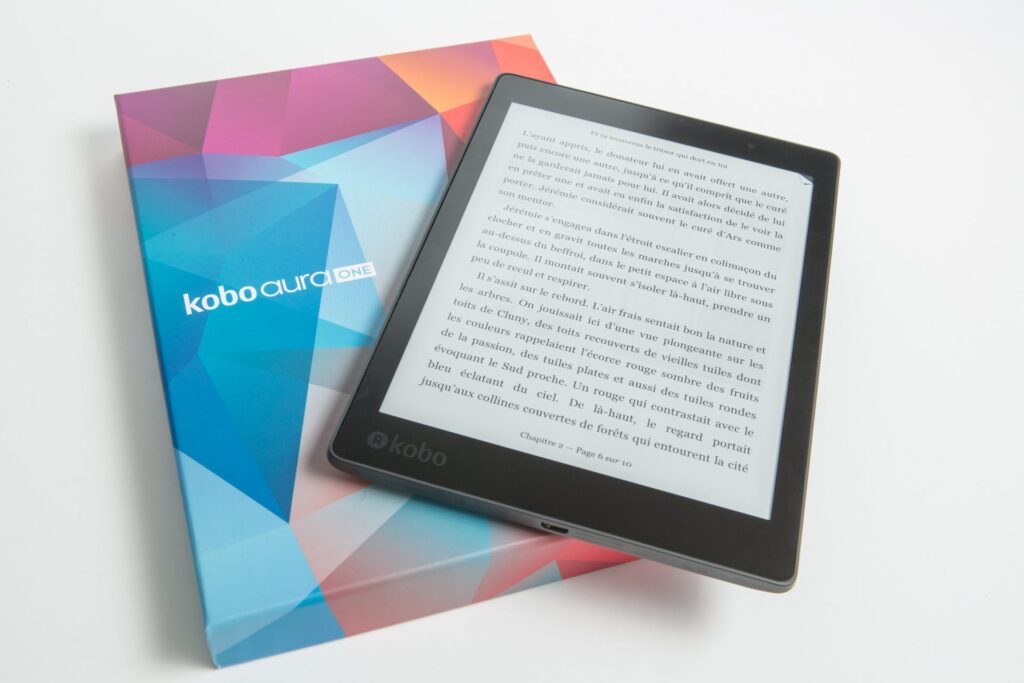If you have knowledge or expertise that you want to share with the world, writing an e-book is an excellent way to do it. Unlike traditional publishing methods, e-books allow you to reach a broad audience quickly and easily, with minimal upfront costs. This comprehensive guide will walk you through the steps to write and publish your own e-book, helping you turn your expertise into a compelling digital publication that resonates with your target audience.
Key Takeaways
- Understand your target audience and specific niche before beginning to write
- Create a detailed content outline to ensure a logical flow throughout your publication
- Use engaging, conversational language and incorporate storytelling techniques
- Design a visually appealing layout with consistent formatting and easy navigation
- Proofread and edit your e-book thoroughly to ensure clarity and coherence
Understanding Your Target Audience and Niche
Before embarking on the e-book writing process, it’s crucial to understand your target audience and the specific niche you want to address. This will enable you to create content that resonates with your readers and offers value to them.
Start by researching your audience’s interests, pain points, and needs. You can conduct surveys, interviews, or analyze online forums and social media discussions. This will help you identify the topics and themes that are most relevant to your audience.
Once you have a better understanding of your target audience, you can start to develop your niche. This could involve choosing a specific area of expertise or topic that you want to explore in-depth. Your niche should be unique and offer a fresh perspective that sets you apart from existing content.
Creating a Buyer Persona
One useful technique for understanding your target audience is to create a buyer persona. A buyer persona is a fictional representation of your ideal reader that includes demographic information, interests, behaviors, and pain points.
You can use this persona to guide your content creation and ensure that your e-book speaks directly to the needs and interests of your target audience. Keep in mind that your buyer persona should be based on real data and research, not guesswork or assumptions.
Mapping Your Content to Your Audience
With a clear understanding of your target audience and niche, you can start to map out your e-book’s content. This involves choosing the themes, topics, and formats that will be most engaging and valuable to your readers.
Consider using storytelling techniques, case studies, or examples to illustrate your points and engage your readers. Ensure that your content is easy to understand and well-organized, with clear headings, subheadings, and sections.

By taking the time to understand your target audience and niche, you can create an e-book that resonates with your readers and drives success. With a well-crafted e-book, you can establish your expertise and authority, build your brand, and generate leads and revenue.
Planning Your Content and Outline
Successful e-book crafting begins with a clear plan. Creating a detailed outline will help you organize your thoughts and ensure a logical flow throughout the publication. Start by brainstorming ideas and identifying the main topics you want to cover. Once you have a rough idea of what you want to say, begin organizing your content into chapters, sections, and subtopics to create a comprehensive structure.
Your outline should be organized in a logical and easy-to-follow manner that aligns with your overall goals and objectives. Be sure to consider your target audience and their expectations when creating your outline. What topics or themes will they find most useful or engaging? How can you break down complex ideas into digestible, bite-sized sections?
Keep in mind that your outline is not set in stone and can be adjusted as you write. Writing is a creative process, and you may find that certain sections flow better or require more or less attention than originally anticipated. Give yourself the flexibility to make changes and adjust your outline as needed.
Elements to Include in Your E-book Outline
| Chapter | Section | Subtopics |
|---|---|---|
| Introduction | – Overview | – About the author |
| – Purpose and benefits | ||
| Chapter 1 | – Topic 1 | – Topic 2 |
| – Topic 3 | ||
| Chapter 2 | – Topic 1 | – Topic 2 |
| – Topic 3 | ||
| Chapter 3 | – Topic 1 | – Topic 2 |
| – Topic 3 | ||
| Chapter 4 | – Topic 1 | – Topic 2 |
| – Topic 3 | ||
| Chapter 5 | – Topic 1 | – Topic 2 |
| – Topic 3 | ||
| Conclusion | – Final thoughts | – Call to action |
| – Additional resources |
By creating a strong outline, you’ll have a roadmap to guide you through the writing process, help you stay on track, and ensure you deliver a comprehensive and effective e-book that reflects your goals and resonates with your target audience.

Writing Engaging and Informative Content
Ready to get started on your e-book? It’s time to craft content that is both engaging and informative for your target audience. By utilizing a conversational writing style, you can keep readers interested and ensure that your content is easy to understand. Incorporate storytelling techniques and provide valuable information that resonates with your target audience to create a compelling and effective e-book.
Don’t forget to edit and revise your content to ensure clarity and coherence. This will help you provide a high-quality reading experience for your readers and showcase your expertise in your niche.
When crafting your e-book, keep your target audience in mind and address their pain points and interests. This will help you provide value to your readers and keep them engaged throughout your publication. Remember, crafting an effective e-book is all about creating content that your target audience will find valuable and interesting.
“The most important thing is to be passionate and knowledgeable about your subject matter. If you can communicate that to your readers while providing genuine value, you’ll have a successful e-book.”
Designing a Visually Appealing Layout
When it comes to crafting a successful e-book, the layout and design are just as important as the content. A visually appealing e-book with a clear and easy-to-navigate format can significantly impact e-book publication success. Here are some tips to help you create a visually appealing layout:
- Use visually appealing graphics, images, and fonts: Incorporating high-quality images, infographics, and graphics can add a touch of professionalism and visual interest to your e-book. Choose fonts that are visually pleasing and easy to read.
- Ensure formatting is consistent: Use consistent formatting throughout your e-book, including headings and subheadings, font size, and style. This will make your e-book look polished and professional.
- Provide clear headings and subheadings: Clear and specific headings and subheadings will make it easier for your readers to find the information they are looking for.
- Use white space: Incorporating white space in your layout will make your e-book easier on the eyes, prevent overcrowding, and create a more professional look.
Consider using a professional: If you are not comfortable with formatting, hire a professional to
help you create an engaging and visually appealing layout. This is an investment that can pay off in the long run.
In short, a visually appealing layout can make all the difference when it comes to e-book publication success. By using graphics, clear formatting, and white space, and considering professional help, you can create an e-book that looks as good as it reads.
Proofreading and Editing Your E-book
Before you publish your e-book, you need to thoroughly proofread and edit it for any grammar, spelling, or punctuation errors. This process will ensure that your content reads smoothly and is free from inconsistencies and repetition. A well-polished e-book will captivate readers and create a positive and professional impression.
You can use free online grammar tools such as Grammarly or ProWritingAid to help detect errors, but it’s important to have a professional editor review your e-book for an extra layer of polish. An editor can also give feedback on the overall structure, tone, and clarity of your content. Investing in a professional edit is worth it when you consider creating a successful e-book that represents you and your brand properly.
As you go through your e-book to proofread and edit, pay close attention to:
- Spelling, grammar, and punctuation errors
- Consistency with formatting, fonts, and styling
- Flow of content and any repetition
- Any factual errors or inconsistencies
Take the time to carefully review your e-book, step-by-step, and consider enlisting the assistance of a knowledgeable editor to assist you with your final product. Effective editing demonstrates professionalism and builds trust with your readers.

Formatting and Publishing Your E-book
When it comes to formatting your e-book, there are a few key considerations you’ll need to keep in mind to ensure that it is visually appealing and easy to read.
First, choose the appropriate file format for your e-book, such as PDF or ePub, and make sure that it is compatible with a variety of devices. This will ensure that your readers can access your e-book no matter what type of device they are using.
Next, you will need to set up an account with an e-book publishing platform. Amazon Kindle Direct Publishing is a popular option, as it allows you to easily distribute and sell your e-book on Amazon.
Once your e-book is formatted and published, it’s important to create an engaging book description and cover design that will attract potential readers. Your description should give readers a sense of what your e-book is about and why it is valuable, while your cover design should be eye-catching and relevant to your content.
Popular E-book Publishing Platforms
| Publishing Platform | Key Features |
|---|---|
| Amazon Kindle Direct Publishing | Easy to use; wide audience reach; supports multiple file formats |
| Smashwords | Free conversion and distribution services; supports multiple file formats |
| Barnes & Noble Press | Easy to use; integrated with Barnes & Noble bookstore |
| iBooks Author | Free software for Mac users; supports multimedia content |
By following these formatting and publishing tips, you’ll be well on your way to crafting and publishing a successful e-book that resonates with your target audience.
Conclusion
Congratulations! You have successfully learned the seven essential steps to write and publish an e-book. By following this comprehensive guide, you are well-equipped to turn your expertise into a valuable digital publication that reaches and resonates with your target audience. Now that you know the steps to write and publish an e-book, it’s time to start taking action and bring your e-book idea to life.
Remember, the key to e-book publication success is to understand your target audience, plan your content, write engaging and informative content, design a visually appealing layout, proofread and edit your e-book, and format and publish it. By following these steps, you can create a compelling e-book that not only showcases your expertise but also provides value to your readers.
So, what are you waiting for? Start writing your e-book today and take the first step towards becoming a successful e-book author!



